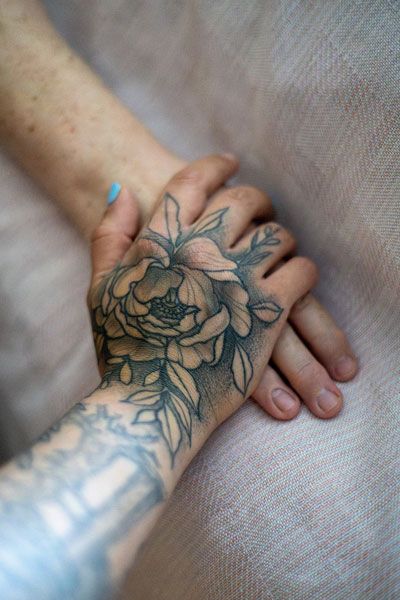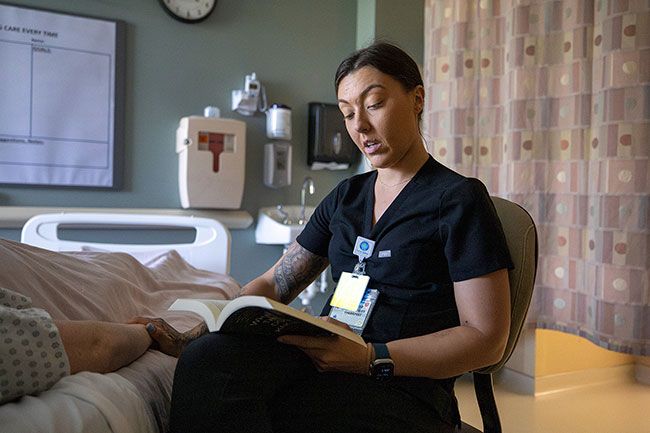Final comfort: program assures No One Dies Alone


Volunteers make sure no one dies alone at Willamette Valley Medical Center.
The volunteers — hospital staff members who’ve gone through training — sit with patients who may be in their last hours of life. No One Dies Alone volunteers may step in so a family member can take a break, or when no relative or close friend is available.
They want to ensure the dying person has the comfort of knowing they haven’t been forgotten and are not alone, said Shannon Carefoot, RN, director of critical care, who oversees the program.
“It’s an act of kindness,” she said.
NODA was started by a nurse in Spokane, Washington, who noticed that not everyone had someone at their bedside when they died. The program spread to other hospitals, and was used in the McMinnville hospital for a few years when Carefoot worked there the first time.
But when she returned after four years in another job, WVMC’s program no longer was operating. She volunteered to organize NODA again, and staff members responded eagerly to her call for volunteers; about 25 quickly registered this spring.
“This program is near and dear to my heart,” said Carefoot, explaining how her years of nursing have given her “a heightened sensitivity for the end of life … I’ve been there.”
She recalled her father had a close friend whom he saw mostly at their frequent poker games. When the man was diagnosed with terminal cancer, he had no family nearby.
Her father stepped in, visiting frequently and “talking through end of life stuff,” she said, such as the man’s will and his wishes for what would happen after he died.
The man, a beekeeper, was concerned about what would happen to his stored honey, for instance. Her father eased his mind by promising to take care of it as he directed.
NODA volunteers don’t act in such a comprehensive fashion; they may be involved for only a few hours, in fact. But her father’s example inspired Carefoot in her efforts to oversee the program at WVMC.
Nurses offer comfort and care to dying people. But they usually have several patients to look after at any one time, she said, so they aren’t able to spend a prolonged period at one person’s bedside.
Volunteers can.
The volunteer program is open to any hospital employee, not only direct health care workers such as nurses or doctors. Lab technicians, food service workers, public relations employees and other workers all can volunteer.
Carefoot said each new volunteer receives training about what to look for and how to react when they are sitting with a dying person.
People may appear to be sleeping in their final hours, or they may be frightened and agitated, she said. Their breathing may be shallow, and an observer may not be able to determine if they are breathing at all.
If a volunteer has a concern or a question, they can call a nearby nurse, Carefoot said.
Volunteers are not responsible for physical care, just for being present, she said.
They may talk to the person or sit quietly. They can play the person’s favorite music or CDs from a special time in their lives. They can read to them, or hold their hand.
“Even if you’re silent, the person knows you’re there,” Carefoot said.
Research indicates the brain is aware even in a person’s last hours, Carefoot said. Dying people may be able to hear and sense the presence of another person, She firmly believes they can.
Having someone at their bedside gives them comfort, she said. And if comfort is possible, she said, the program is well worth it.








Comments
wyser
God bless each and every one of you.
CubFan
What a great program!